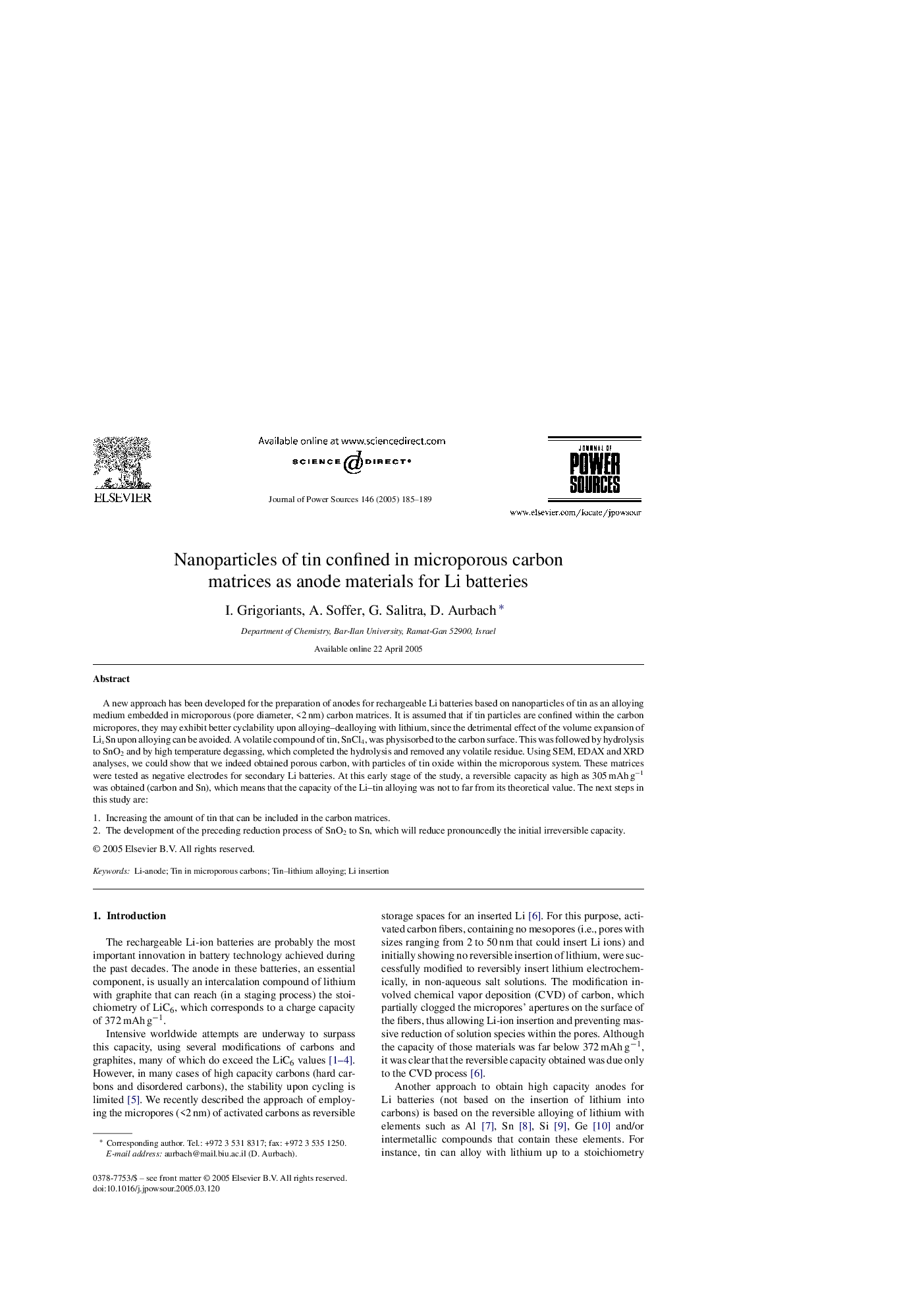| Article ID | Journal | Published Year | Pages | File Type |
|---|---|---|---|---|
| 9760306 | Journal of Power Sources | 2005 | 5 Pages |
Abstract
A new approach has been developed for the preparation of anodes for rechargeable Li batteries based on nanoparticles of tin as an alloying medium embedded in microporous (pore diameter, <2 nm) carbon matrices. It is assumed that if tin particles are confined within the carbon micropores, they may exhibit better cyclability upon alloying-dealloying with lithium, since the detrimental effect of the volume expansion of LixSn upon alloying can be avoided. A volatile compound of tin, SnCl4, was physisorbed to the carbon surface. This was followed by hydrolysis to SnO2 and by high temperature degassing, which completed the hydrolysis and removed any volatile residue. Using SEM, EDAX and XRD analyses, we could show that we indeed obtained porous carbon, with particles of tin oxide within the microporous system. These matrices were tested as negative electrodes for secondary Li batteries. At this early stage of the study, a reversible capacity as high as 305 mAh gâ1 was obtained (carbon and Sn), which means that the capacity of the Li-tin alloying was not to far from its theoretical value. The next steps in this study are:
Keywords
Related Topics
Physical Sciences and Engineering
Chemistry
Electrochemistry
Authors
I. Grigoriants, A. Soffer, G. Salitra, D. Aurbach,
